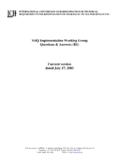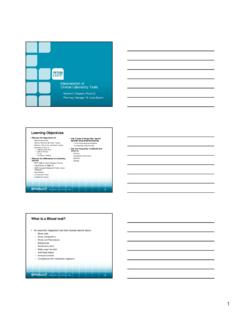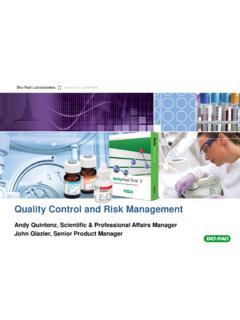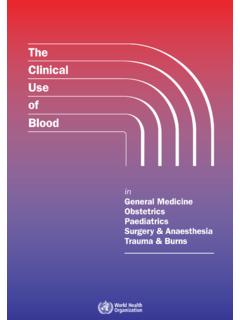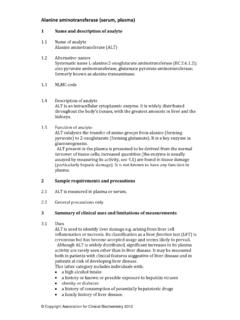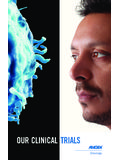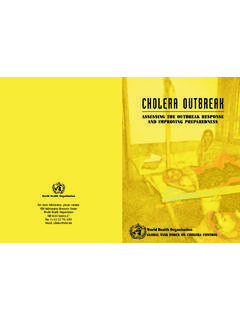Transcription of 13 – Essential Elements in Clinical Trial Assessment
1 L1. 13 Essential Elements in Clinical Trial Assessment Presentation to APEC Preliminary Workshop on Review of Drug Development in Clinical Trials Celia Lourenco, PhD, Manager, Clinical Group I. Office of Clinical Trials Therapeutic Products Directorate 1. Slide 1. L1 Lourenco; Disclaimer: the information within this presentation is based on the presenter's expertise and experience, and represents the views of the presenter for the purposes of a training workshop 2. Overview Sufficient evidence (safety, efficacy, and quality).
2 Enabling regulatory framework Good review practices when assessing a Clinical Trial Challenges & strategies Lessons learned from the Canadian experience 3. Sufficient Evidence Sufficient evidence signifies a positive benefit- to-risk ratio based on a sum of all of the following: Acceptable Quality (CMC) for the phase of development Acceptable supporting nonclinical and Clinical data (as applicable) for the phase of development, type of drug and/or disease target Acceptable protocol and informed consent form for the proposed Trial Maintenance of the positive benefit/risk ratio during the conduct of the Trial through safety monitoring of the Trial as well as other ongoing trials with the drug ( product life-cycle' approach) 4.
3 SUADRs Other 2 - CTA Review and 3 - Trial is information conducted Documentation Life Cycle Trial of a Discontinuation Clinical Trial : Regulator 4 - CTA-As 1 - Pre-CTA and/or Consultation Perspective Notifications 5 - Trial completed Regulatory Framework must be Enabling of Sound Benefit / Risk Assessment Regulatory Framework Regulations must aim to protect Clinical Trial subjects and enable sound benefit / risk Assessment , without unduly restricting research and access Regulatory requirements should take into consideration the global context Gobalization.
4 Adopt international guidelines where possible Address regional-specific issues by developing region-specific guidelines Guidance documents on process, format, and content, of Clinical Trial applications should be available 6. Good Review Practices Overview Regulatory expertise Scientific expertise Time management Documentation Systematic approach to review Review of subsequent information life cycle approach 7. Good Review Practices (1). Regulatory expertise: Know the applicable regulations Know the applicable guidelines Know the difference between regulations and guidelines Regulations are mandatory requirements Guidelines are supported by regulations but allow flexibility in requirements when acceptable scientific rationales are presented Check prior decisions that were precedence-setting and ensure consistency Use a case-by-case approach for infrequent scenarios 8.
5 Good Review Practices (2). Scientific expertise (CMC): Know the principles of CMC and GMP for pharmaceuticals or biologics Know the basic quality requirements and considerations for the type of drug product and Clinical Trial stage in question (quality is linked to Clinical application). Consult with colleagues and read the latest literature related to the product area 9. Good Review Practices (3). Scientific expertise ( Clinical ): Know how the disease is treated and the Clinical practice guidelines relevant to the disease area Read the latest literature on the disease Compare the information with the background and rationale provided by the sponsor Consult with internal or external experts in the disease area as needed If unclear about the rationale for the study, ask the sponsor for additional information 10.
6 Good Review Practices (4). Time management: A good review takes time, therefore, do the preliminary Assessment as soon as possible taking into consideration the time available Prioritize applications that may present problems following initial overview / screen Major issues should be communicated to the sponsor as early as possible to allow time for discussion and resolution Strive for issuing requests for additional information once the entire data package has been reviewed 11. Good Review Practices (5).
7 Documentation: Documentation of the review of the Clinical Trial should be accurate and concise, including information about the drug, sponsor and manufacturer, protocol number, title of the study, and the regulatory tracking number(s) assigned to the Clinical Trial application Templates filled out by the sponsor can be used in preparing the review report 12. Good Review Practices (6). Documentation (continued): Both the Clinical and quality (CMC) review reports should include a section where the reviewer summarizes the Essential quality and Clinical Elements in the proposed Clinical Trial presented by the sponsor, along with the reviewer's comments and thought processes in the analysis of the information The reviewer's recommendation should be clearly supported by a scientific and/or Clinical Assessment of the overall benefit-to-risk ratio 13.
8 Good Review Practices (7). Documentation (continued): Any deficiencies identified during review should be described along with the outcome of all discussions with colleagues, managers, experts, or communications with the sponsor to resolve the deficiencies All communications with the sponsor ( , faxes, letters, emails, records of telephone conversations) should be appended to the review report 14. Good Review Practices (8). Documentation (continued): Review reports should be signed by the reviewer and dated along with the recommendation for disposition of the Clinical Trial in line with the applicable regulations.
9 The Clinical Trial application is considered to comply with section (1)(a) of the Food and Drug Regulations, and a No-Objection-Letter is recommended The Clinical Trial application is not considered to comply with section (1)(a) of the Food and Drug Regulations, and a Not-Satisfactory- Notice is recommended for the following reasons: 15. Good Review Practices (9). Electronic documents: Review reports should be saved electronically on a shared drive for ease of access and reference when subsequent applications, such as amendments, are filed by the sponsor The investigator's brochure should also be kept electronically for quick access if needed (such as when a safety issue arises through serious ADR reporting).
10 16. Good Review Practices (10). Approach to review is a systematic approach: Review of the dossier should begin with an Assessment of the prior experience with the drug, including nonclinical data The CMC data requirements should always be linked to the Clinical Trial context in question Nonclinical data has greater impact on initial trials as compared to later development confirmatory trials, but is still important with regards to safety at later stages ( , results of long-term carcinogenicity, reproduction toxicity, fetal development, fertility studies, etc.)
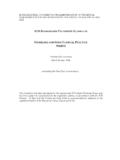
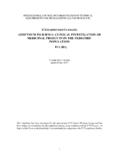
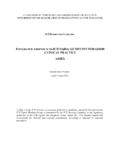
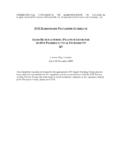
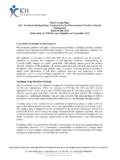
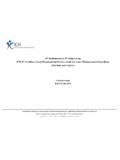
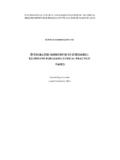
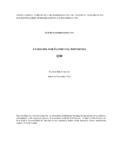
![[ICH E2F] [EXAMPLE DSUR – PHASE III …](/cache/preview/1/3/5/f/e/1/c/f/thumb-135fe1cf2cdb82799c462ad0ea089c48.jpg)
